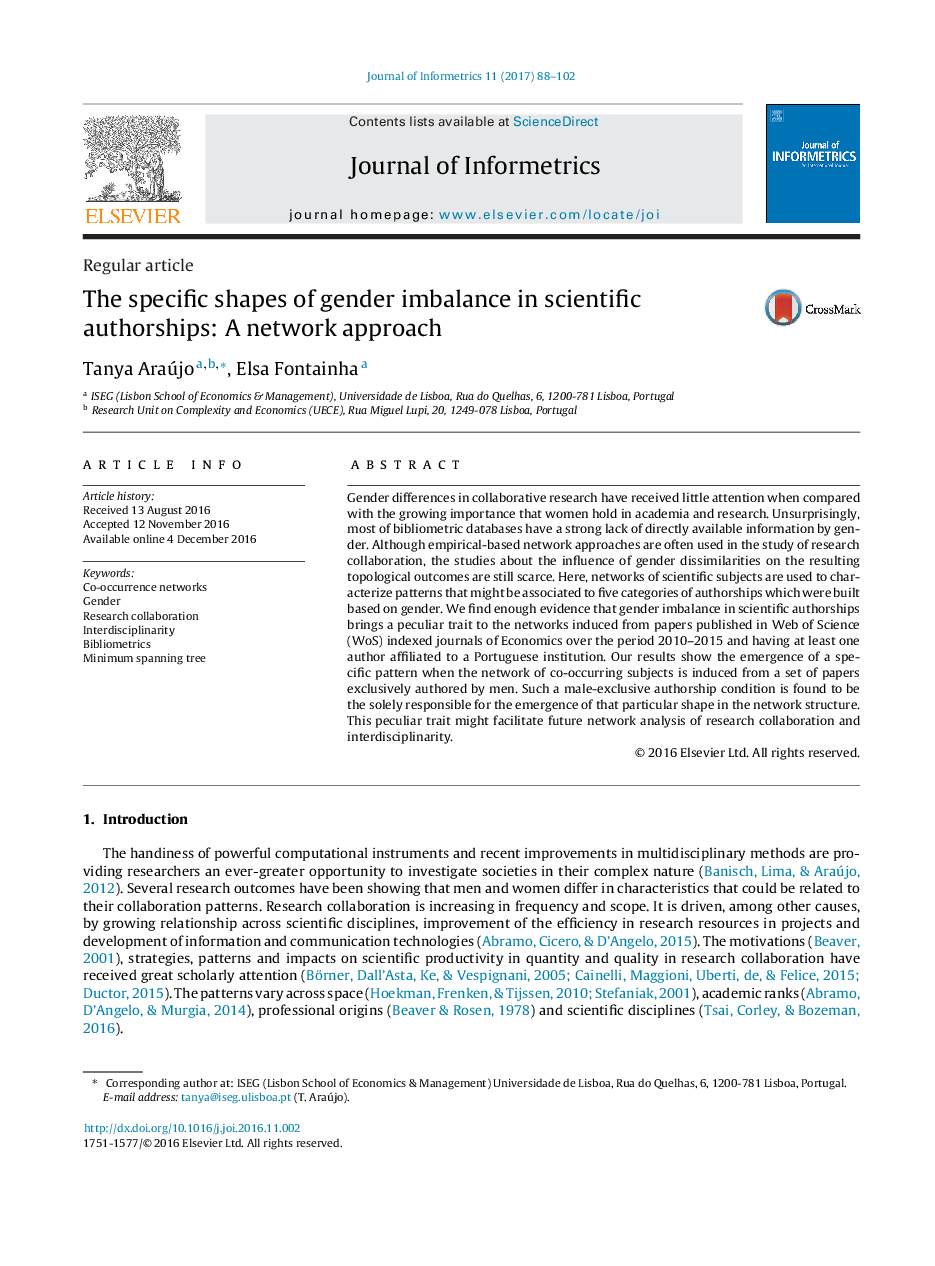| کد مقاله | کد نشریه | سال انتشار | مقاله انگلیسی | نسخه تمام متن |
|---|---|---|---|---|
| 4968111 | 1365184 | 2017 | 15 صفحه PDF | دانلود رایگان |
- From empirical data, networks of scientific co-occurring subjects are defined.
- These networks show patterns associated to categories of authorships by gender.
- Network analysis is complemented with the construction of the corresponding MSTs.
- Emerging topological patterns uncover a trait of gender imbalance in scientific authorship.
- The male-exclusive authorship condition brings a particular shape to the MST.
Gender differences in collaborative research have received little attention when compared with the growing importance that women hold in academia and research. Unsurprisingly, most of bibliometric databases have a strong lack of directly available information by gender. Although empirical-based network approaches are often used in the study of research collaboration, the studies about the influence of gender dissimilarities on the resulting topological outcomes are still scarce. Here, networks of scientific subjects are used to characterize patterns that might be associated to five categories of authorships which were built based on gender. We find enough evidence that gender imbalance in scientific authorships brings a peculiar trait to the networks induced from papers published in Web of Science (WoS) indexed journals of Economics over the period 2010-2015 and having at least one author affiliated to a Portuguese institution. Our results show the emergence of a specific pattern when the network of co-occurring subjects is induced from a set of papers exclusively authored by men. Such a male-exclusive authorship condition is found to be the solely responsible for the emergence of that particular shape in the network structure. This peculiar trait might facilitate future network analysis of research collaboration and interdisciplinarity.
Journal: Journal of Informetrics - Volume 11, Issue 1, February 2017, Pages 88-102
